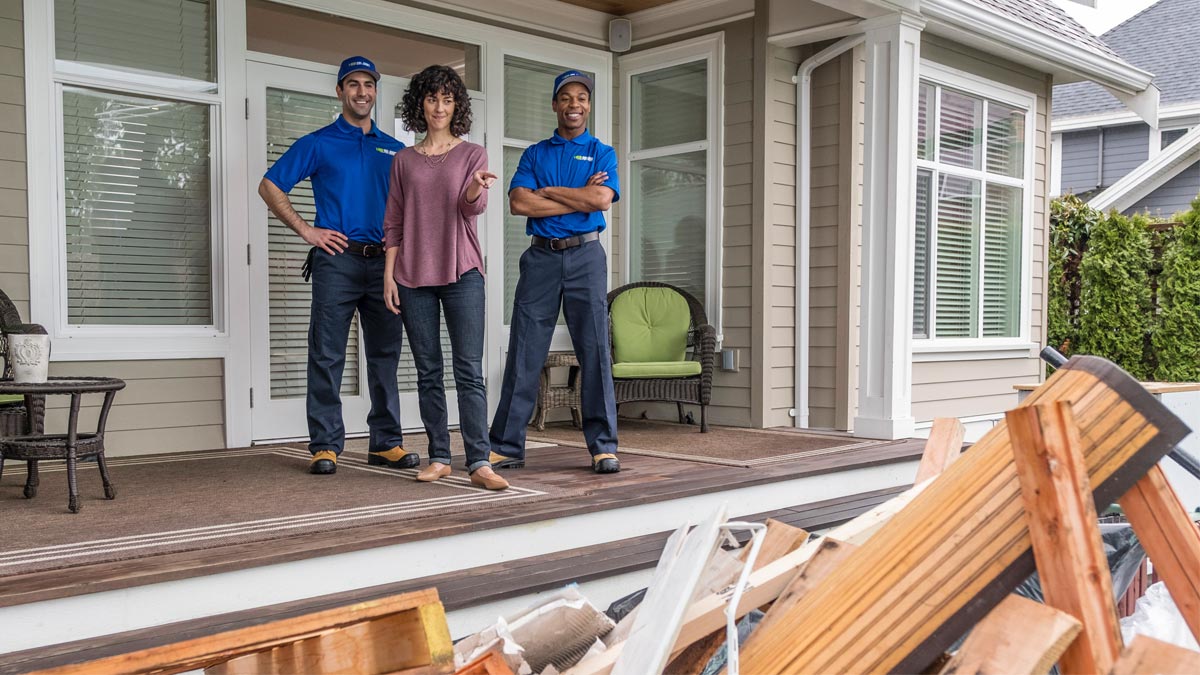Your renovation project is over (or halfway there) and now you need to get rid of the mess. Guest beds are hitting the curb to make way for an office or a studio, and those empty basements now include new drywall and floorboards. Televisions are being replaced, wall-mounted and flat instead of tubes or boxes.
As Baby Boomers begin to retire, some are leaving behind larger spaces. They may rent out existing rooms in their homes or move into new ones to scale back on spending. But even if you’re not retiring and are just looking for something new, remodeling a home is a great way to increase value or just add convenience. When you’re renovating, you inevitably wind up with debris. What’s the best way to ensure that everything is properly taken care of? What’s the stuff to worry about, and why?
Debris removal and recycling go hand in hand
Here are seven of the most common materials you may come across during your renovation or construction project, ranked from easiest to most challenging to recycle:
1. Concrete & Mixed Rubble
A good chunk of the waste generated annually for building-related construction and demolition is concrete and mixed rubble, and infrastructure is in place to keep it out of landfills. Depending on your local options for having it removed, it can be reused for anything from gravel to roadway material.
2. Wood
Recycled timbers can be used in future construction, although they’re more commonly recycled into scrap wood and chips. These can be used for particleboard as well, so keeping them with the rest of the wood makes it easier to keep track of everything.
3. Drywall
Not every landfill will take drywall or any gypsum materials, which is good, because when it decomposes it bleeds 25% of its weight in hydrogen sulfide (a.k.a. natural gas). It can be recycled into new drywall and similar gypsum products instead. Moving it aside right away means smaller elements of the gypsum are less likely to contaminate your other waste.
4. Asphalt Roofing
Very little asphalt actually goes to landfills, since it’s so recyclable. It winds up in everything from pothole repairs to brand new blacktop or simply more shingles. It’s also the easiest to stack when sorting, saving much-needed room during your renovation.
5. Metals
Depending on the substance, metals are generally easy to recycle in bulk. This means keeping them all together is fine for starters.
6. Bricks
Surprisingly far down the list is bricks, split roughly equally with metals and plastics for a three-way tie at the bottom. Alongside their obvious potential to be used in your own future renovations or décor, they might find a welcome home with someone else with similar ideas. Either way, sort the broken ones out first.
7. Plastics
The biggest challenge to recycling plastics is the sorting of different plastic types, so despite this being only one category, it’s a bit sneaky. Use online resources to check types of plastic if you’re not sure about something. Keep an ‘unsure pile’ if the internet lets you down – you can always check later.
Homes will always be disrupted during work like this, so why not use the extra space to sort your renovation debris? If you haven’t yet considered how you’ll dispose of the piles you’ve accumulated, sorting will simplify what goes where and save time later.






